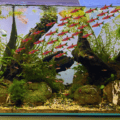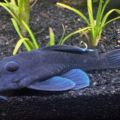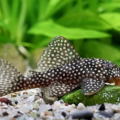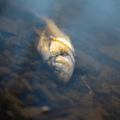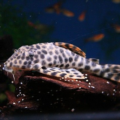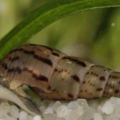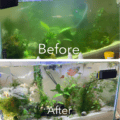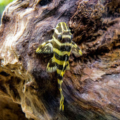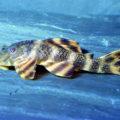An in-depth look at the best care practices for preserving Zebra Pleco. Including maintenance tips for breeding in captivity and community tank setup.

Introduction
Did you know there are many variants of the small freshwater striped Pleco? Are you ready to add one of these species to your tank? Then, you’d love the Zebra Pleco. It’s a stunning Hypancistrus species prized for its striking black-and-white striped pattern.
They have a peaceful nature and retain their small size, which appeals to advanced aquarists and beginners alike. Hypancistrus fish are typically low maintenance, and these Zebra Pleco care tips will prove that you don’t need to break the bank to give your pets a healthy life.
This Hypancistrus zebra overview contains important details on maintaining this fish from identification to environments, feeding, breeding, and health care.
See Also: The Striking Beauty of Zebra Angelfish: A Detailed Guide for more care tips on another zebra patterned fish!
The Bold Beauty of Zebra Pleco
Zebra Plecos have distinct, high-contrast black-and-white stripes which makes them visually striking. Its unique patterns stand out in aquascaped tanks, but that’s not the only means of identifying Zebra Plecos.
Color Pattern
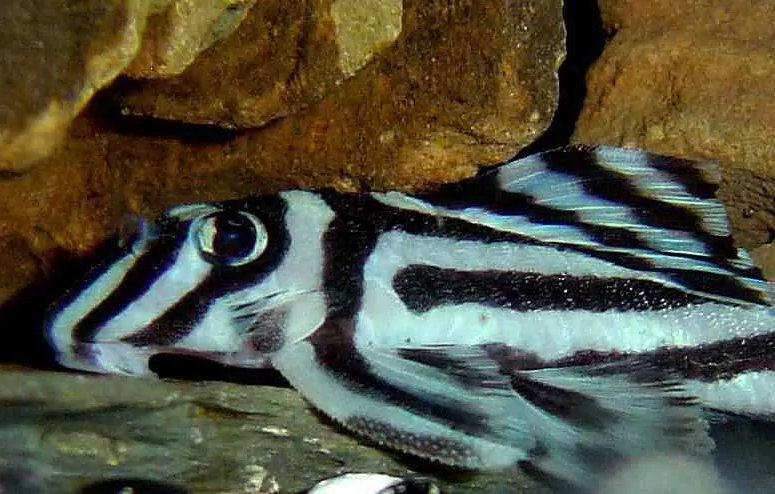
You’ll notice some differences when you look closely at the details of the bold and uniform stripes all over the Zebra Pleco’s 3 inch (7.6 cm) body.
Each Zebra pleco’s color intensity and other Hypancistrus visual features like their broad head and suckermouth depend on genetics and health maintenance. Younger Zebra Plecos have sharper patterns that fade as they mature.
Unique Traits
Other traits peculiar to this striped aquarium fish are its preference for hiding spots and its nocturnal activities. They’re active at night and in dim-lit aquariums, so take note when you build their living environment.
Creating the Perfect Home for Zebra Plecos
My primary recommendations for setting up an optimal habitat for Zebra Plecos will always be to provide clean water, dim led lighting, and caves for shelter. Here’s a deeper look at the environmental needs.
Tank Size and Layout
A minimum tank size of 30 gallons with driftwood, rocks, and hiding spots is ideal for a pair or trio of Zebra Plecos. Ensure the driftwood and rock placement are safe and secured.
Scroll down to see more.
Water Parameters
Zebra Plecos are a sensitive species, so following these water parameters will create a natural freshwater Pleco environment.
| Temperature | 78 – 86℉ |
| pH | 6 – 7.5 |
| Hardness | 5 – 15 dGH |
| Oxygen | High |
| Flow | Strong |
Substrate and Decor

Use rocky but fine substrates like smooth pebbles and small granite to mimic their natural environment. Also, add driftwood, tunnels, and caves for hiding and breeding.
After your Zebra Pleco habitat is setup, it’s time to feed your pets.
Feeding Zebra Plecos: Meeting Their Carnivorous Needs
You’ll read everywhere that Zebra Plecos are omnivorous pets, but only a few guides like this will tell you of their carnivorous preferences. So, they need protein-rich foods and other nutrients as supplements.
Diet Suggestions
You can build a protein-rich diet with sinking carnivore pellets, bloodworms, brine shrimp, and other kinds of frozen or live foods. Then, add occasional algae wafers and vegetables as supplements for their gut health.
For more on feeding your aquatic pets check out The Ultimate Guide to Fish Food: Pros and Cons & Best Choices!
Feeding Tips
Feeding Zebra Pleco at night aligns with its natural activity cycle. Serve them only twice to three times daily, in portions that they can finish within three minutes.
Remember that Carnivorous freshwater fish nutrition shouldn’t stop you from providing other necessary classes of food.
Peaceful Yet Territorial: Understanding Zebra Pleco Behavior
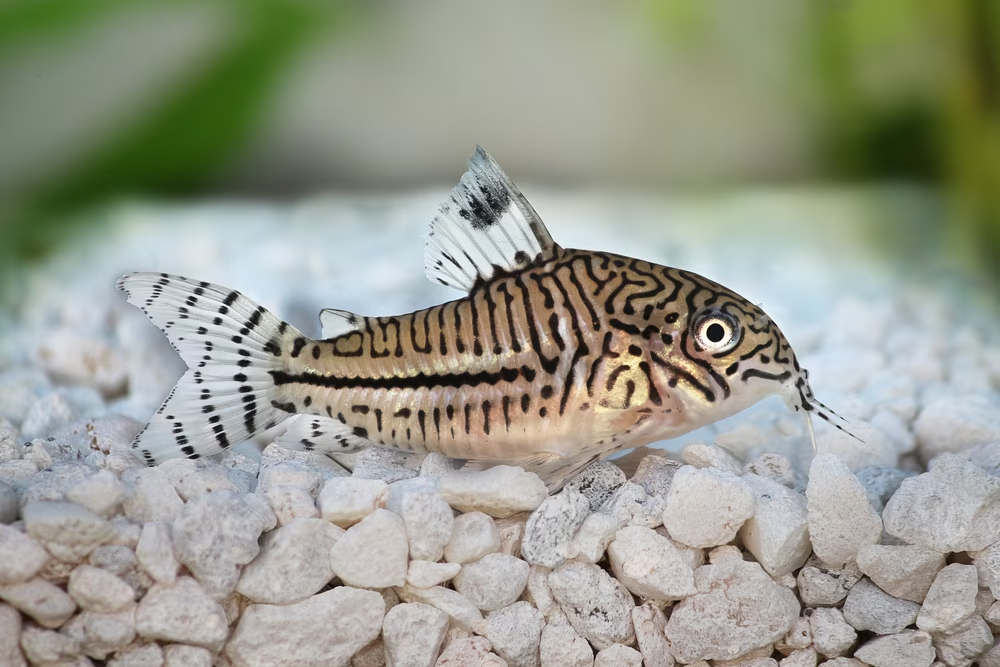
If, like most aquarists, you’re keeping your Zebra Pleco with other species, then you must focus on community tank fish care. Follow the tips in this peaceful freshwater fish guide for a harmonious tank.
Firstly, note that Zebra Plecos are territorial, so they can only thrive with non-aggressive and calm tank mates who don’t outcompete them during feeding. Some compatible Zebra Pleco tank companions are small tetras, rasboras, and other catfish species like corydoras.
It’s best to avoid larger or aggressive fish because they’ll outcompete for food and stress your Zebra Pleco.
See Also: Pitbull Pleco (Parotocinclus jumbo): The Perfect Algae Cleaner for Compact Aquariums
Lifespan of Zebra Plecos: Long-Term Care Essential
The lifespan of the Zebra Pleco is longer than that of most fish species. With proper care, stable water conditions, and a protein-rich diet, your Zebra Plecos can live up to 10 – 15 years. Actionable tips for longevity include;
Lifespan Factors
Long-term aquarium fish care starts with basic maintenance of lifespan factors like water stability, proper nutrition, and minimal stress. Scroll back up to refresh your memory on how to give your pets optimal living conditions.
Care Tips for Longevity
Also add routine maintenance and close observation for health issues so you can quickly treat illnesses. Change 20 – 30% of the tank water, remove uneaten food, and use a good filtration system to ensure Hypancistrus zebra care longevity.
Breeding Zebra Plecos: Overcoming the Challenges
Breeding Zebra Pleco is a privilege you shouldn’t take for granted because it’s an endangered species. Given the right conditions, like pristine water and specialized breeding setups, they exhibit the same breeding behaviors in captivity as in the wild.
Breeding Setup
Build a breeding tank with caves and slightly acidic water for successful Hypancistrus Zebra spawning. Increase the water flow and allow natural behaviors like the males fertilizing and guarding the eggs after the females lay them in the caves.
Use the same water parameters stated above and keep the water pristine. Within 5 – 7 days, the eggs will hatch.
Fry Care Tips
Fry care for pleco species differs based on their dietary needs. Zebra Plecos, for instance, need high-protein powdered food or microworms to satisfy their carnivorous appetite, unlike Clown Plecos, which feed on driftwood and large wafers.
You can also feed your Zebra Pleco fry infusoria until they’re able to digest crushed food and small proteins.
Preventing Health Issues in Zebra Plecos
Avoiding Pleco diseases and common health issues like stress-related illnesses or poor water quality is easy when you follow the instructions in this guide. In case you missed it, here’s a summary of actionable preventative measures and Zebra Pleco health tips:
Preventative Measures
- Maintain stable water parameters to avoid stress and discomfort.
- Avoid overcrowding to reduce stress and malnutrition.
- Ensure proper filtration to keep pristine water conditions.
Signs of Illnesses
You may see physical or behavioral signs of illnesses in your Zebra Plecos if you follow the longevity tip earlier in this guide.
| Physical Signs | Behavioral Signs |
| Discoloration Damaged Fins Bloating Spotted scales | Lethargy Loss of appetite Gasping Erratic Swimming Patterns |
These signs could point to bacterial or fungal infections, internal parasites, or overall discomfort. Optimal living environments, balanced diets, and compatible tank mates are Hypancistrus fish care essentials that can ensure good health for your pets.
Conclusion
You have all the best striped Pleco aquarium tips to guarantee you the best experience preserving Zebra Plecos’ lives as pets. You know that replicating their natural habitat and adopting healthy practices to maintain their stunning appearance and health is the foundation of Hypancistrus aquarium success.
Luckily, the care requirements in this Zebra Pleco care guide are manageable and beginner-friendly. Leave us a comment on how it goes!

